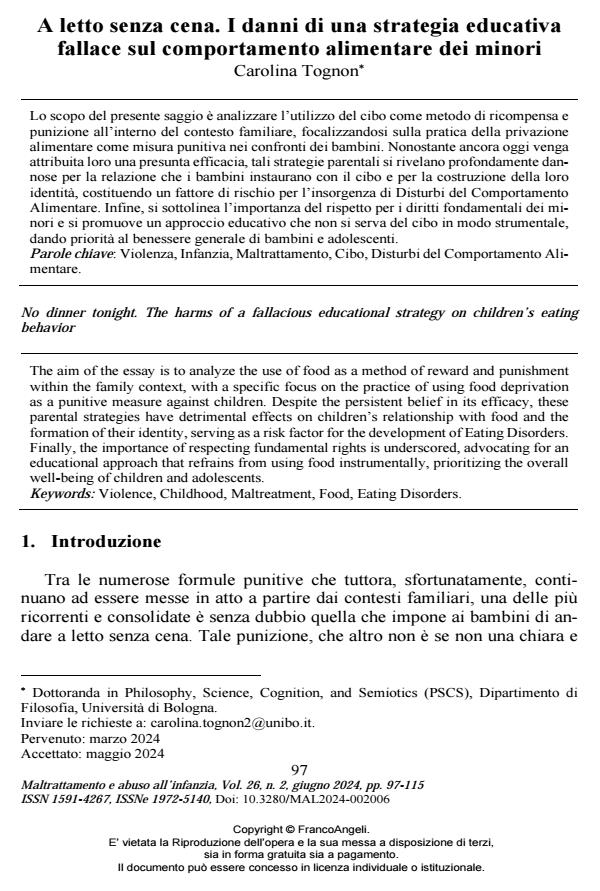A letto senza cena. I danni di una strategia educativa fallace sul comportamento alimentare dei minori
Titolo Rivista MALTRATTAMENTO E ABUSO ALL’INFANZIA
Autori/Curatori Carolina Tognon
Anno di pubblicazione 2024 Fascicolo 2024/2
Lingua Italiano Numero pagine 19 P. 97-115 Dimensione file 211 KB
DOI 10.3280/MAL2024-002006
Il DOI è il codice a barre della proprietà intellettuale: per saperne di più
clicca qui
Qui sotto puoi vedere in anteprima la prima pagina di questo articolo.
Se questo articolo ti interessa, lo puoi acquistare (e scaricare in formato pdf) seguendo le facili indicazioni per acquistare il download credit. Acquista Download Credits per scaricare questo Articolo in formato PDF

FrancoAngeli è membro della Publishers International Linking Association, Inc (PILA)associazione indipendente e non profit per facilitare (attraverso i servizi tecnologici implementati da CrossRef.org) l’accesso degli studiosi ai contenuti digitali nelle pubblicazioni professionali e scientifiche
Lo scopo del presente saggio è analizzare l’utilizzo del cibo come metodo di ricom-pensa e punizione all’interno del contesto familiare, focalizzandosi sulla pratica della privazione alimentare come misura punitiva nei confronti dei bambini. Nonostante ancora oggi venga attribuita loro una presunta efficacia, tali strategie parentali si rive-lano profondamente dannose per la relazione che i bambini instaurano con il cibo e per la costruzione della loro identità, costituendo un fattore di rischio per l’insorgenza di Disturbi del Comportamento Alimentare. Infine, si sottolinea l’importanza del ri-spetto per i diritti fondamentali dei minori e si promuove un approccio educativo che non si serva del cibo in modo strumentale, dando priorità al benessere generale di bambini e adolescenti.
Parole chiave:Violenza, Infanzia, Maltrattamento, Cibo, Disturbi del Comportamento Alimentare.
Carolina Tognon, A letto senza cena. I danni di una strategia educativa fallace sul comportamento alimentare dei minori in "MALTRATTAMENTO E ABUSO ALL’INFANZIA" 2/2024, pp 97-115, DOI: 10.3280/MAL2024-002006